65q24g4g5f
Edited by Vendayn, March 9 2018 - 7:07 PM.

65q24g4g5f
Edited by Vendayn, March 9 2018 - 7:07 PM.
I think feeding A. versicolor almost anything that contains cellulose and/or lignin would be acceptable to the fungus. The ants themselves don't actually eat any of the plant matter...as far as I know anyway. You could probably give them cardboard to feed their fungus! (don't do that.)
My ants | My free feeder design | PM or email me if you need and 3d printing, cnc machining, or manufacturing done: http://www.lrmachining.com
Make your own mold/fungus/bacteria resistant test tube water! Don't get ripped off! Read my simple guide: http://www.formicult...-simple-how-to/
"Self-education is, I firmly believe, the only kind of education there is." - Isaac Asimov
65q24g4g5f
Edited by Vendayn, March 9 2018 - 7:07 PM.
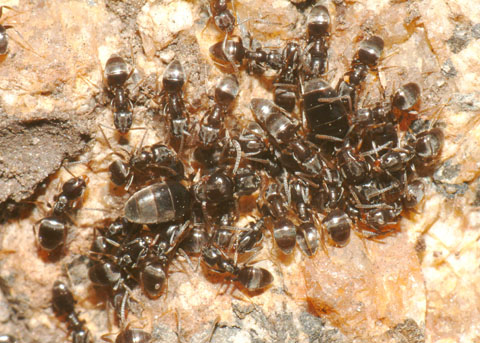
Walnut just seems a bit of a weird food for the fungus to consume, since I think of typical things that are leafy or have petals (and is "consume" that the word for what the fungus does to the stuff?
Take some soggy walnuts, put them in a bag and let them sit around for a few weeks. It won't seem so weird then. ![]()
Drew, I think this is amazing I started from the first page in 2014 and read everything up to now. And I love how no matter what you kept going and wouldn't give up trying to keep these ants.
RIP for the ants in the civil war
Thanks. Yeah, I'm pretty stubborn and determined.
Here's a pretty cool before and after picture [...]
My colonies:
European species: Lasius niger (1 colony and dozens of fundations), Lasius emarginatus (foundation), Lasius flavius (foundation), Messor barbarus (foundation), Messor capitatus (colony), Messor minor hesperius (colony), Pheidole pallidula (colony), Camponotus cruentatus (colony), Camponotus barbaricus (colony), Camponotus ligniperdus (foundation), Formica lemani (foundation), Formica cinerea (foundation)
Asian species: Pheidole noda (mature colony), Camponotus nicobarensis (colony), Polyrachis dives (foundation)
South American species: Acromyrmex echinatior (huge colony)
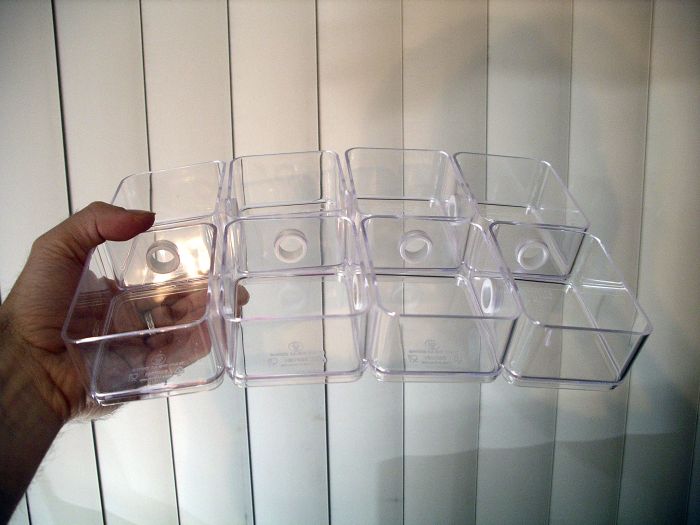
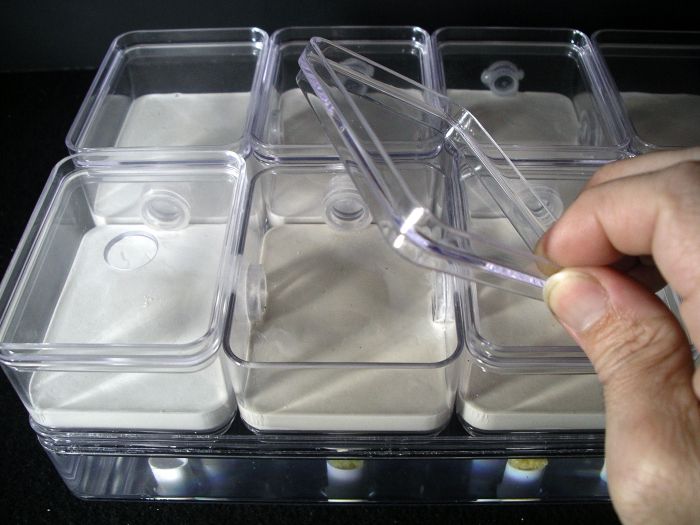
Oh ok. Awesome setup. Were these separate boxes at first? What did you use to make the connections? It looks real nice.
My colonies:
European species: Lasius niger (1 colony and dozens of fundations), Lasius emarginatus (foundation), Lasius flavius (foundation), Messor barbarus (foundation), Messor capitatus (colony), Messor minor hesperius (colony), Pheidole pallidula (colony), Camponotus cruentatus (colony), Camponotus barbaricus (colony), Camponotus ligniperdus (foundation), Formica lemani (foundation), Formica cinerea (foundation)
Asian species: Pheidole noda (mature colony), Camponotus nicobarensis (colony), Polyrachis dives (foundation)
South American species: Acromyrmex echinatior (huge colony)
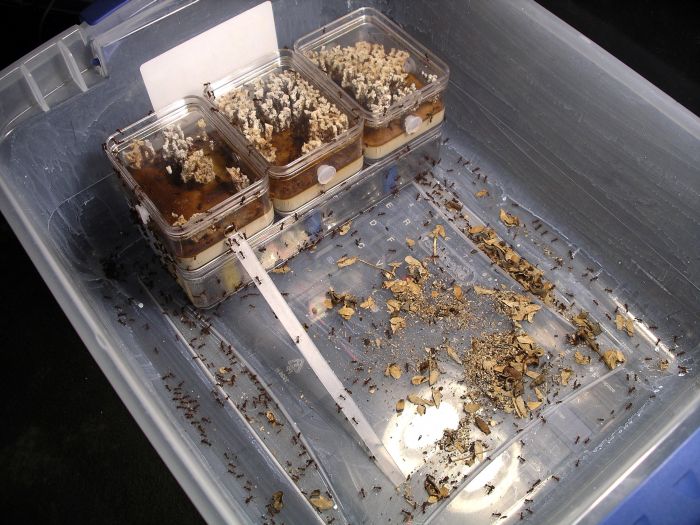
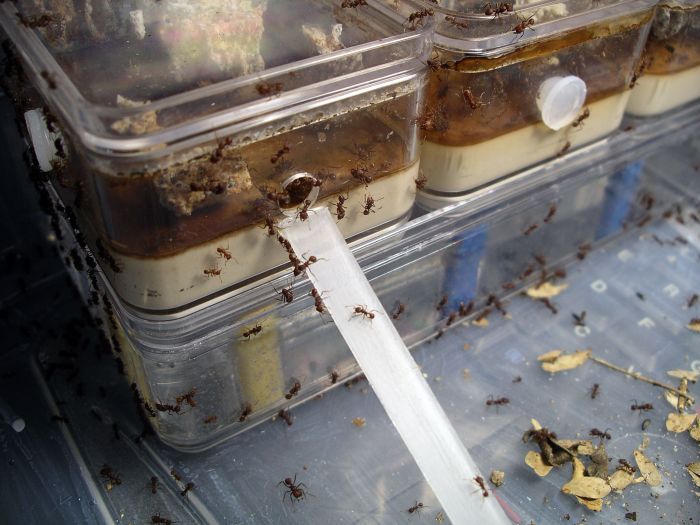
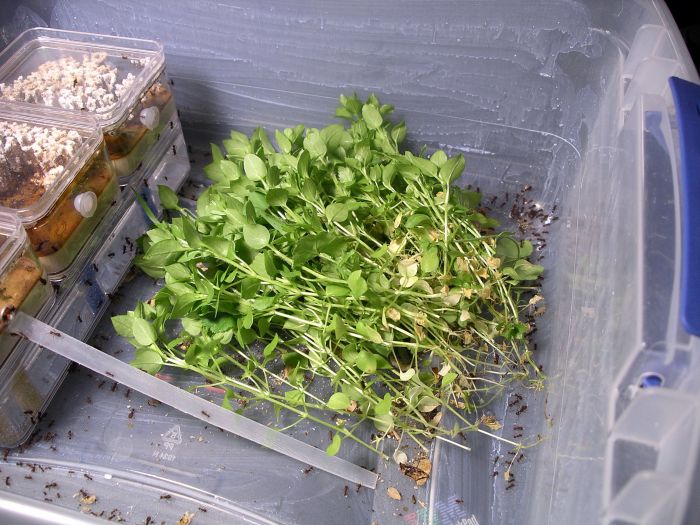
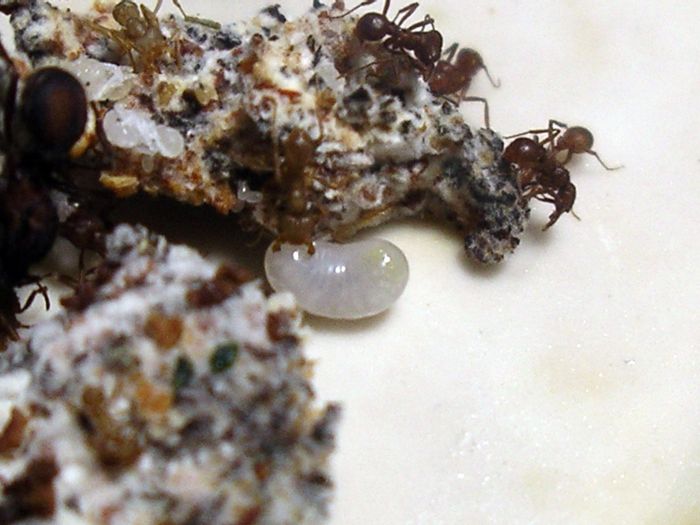
Do you think the colony that lost its queen would accept a new one when the nuptial flights come around? It would be a shame to see the colony slowly collapse from that.
This message brought to you by the Committee for the Education of Folks who Describe Arthropod Taxa as 'Not Interesting' (CEFDATNI)
It's possible. I think I was going to try putting one of my new queens from last season in there, but never got around to it. The colony is almost completely died off now though. It's been six months. I supplied all the queens I got last season with fungus from that colony, so it wasn't a waste at all.
so cool.
It's possible. I think I was going to try putting one of my new queens from last season in there, but never got around to it. The colony is almost completely died off now though. It's been six months. I supplied all the queens I got last season with fungus from that colony, so it wasn't a waste at all.
Oh that's good at least. Once all the workers die off I guess you can just hand the remaining fungus to another queen.
This message brought to you by the Committee for the Education of Folks who Describe Arthropod Taxa as 'Not Interesting' (CEFDATNI)
65q24g4g5f
Edited by Vendayn, March 9 2018 - 7:07 PM.
Great idea with the small boxes as fungus chambers. But you'll have to build a lot of them to house a mature colony ![]()
I'm going to add on vertically, so this thing will hold quite a bit in a small footprint.
I can't believe how large this colony is getting, look at all that food they eat too ![]()
Those photos looking photogenic...
Ant Keeping →
Ant Keeping Journals →
cooIboyJ's Nylanderia vividula journalStarted by cooIboyJ , Sep 6 2025 |
|

|
||
Ant Keeping →
Ant Keeping Journals →
Ants_Dakota's Camponotus sp. JournalStarted by Ants_Dakota , Jul 13 2025 |
|

|
||
Ant Keeping →
Ant Keeping Journals →
Strickys Formica JournalStarted by stricky_ants , Jun 21 2025 |
|
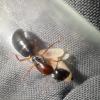
|
||
Ant Keeping →
Ant Keeping Journals →
AntTx's Camponotus sansabeanus JournalStarted by AntsTx , Jun 17 2025 |
|

|
||
Ant Keeping →
Ant Keeping Journals →
The Bark Battalion (Liometopum occidentale)Started by AntsGodzilla , Jun 3 2025 |
|

|
0 members, 1 guests, 0 anonymous users